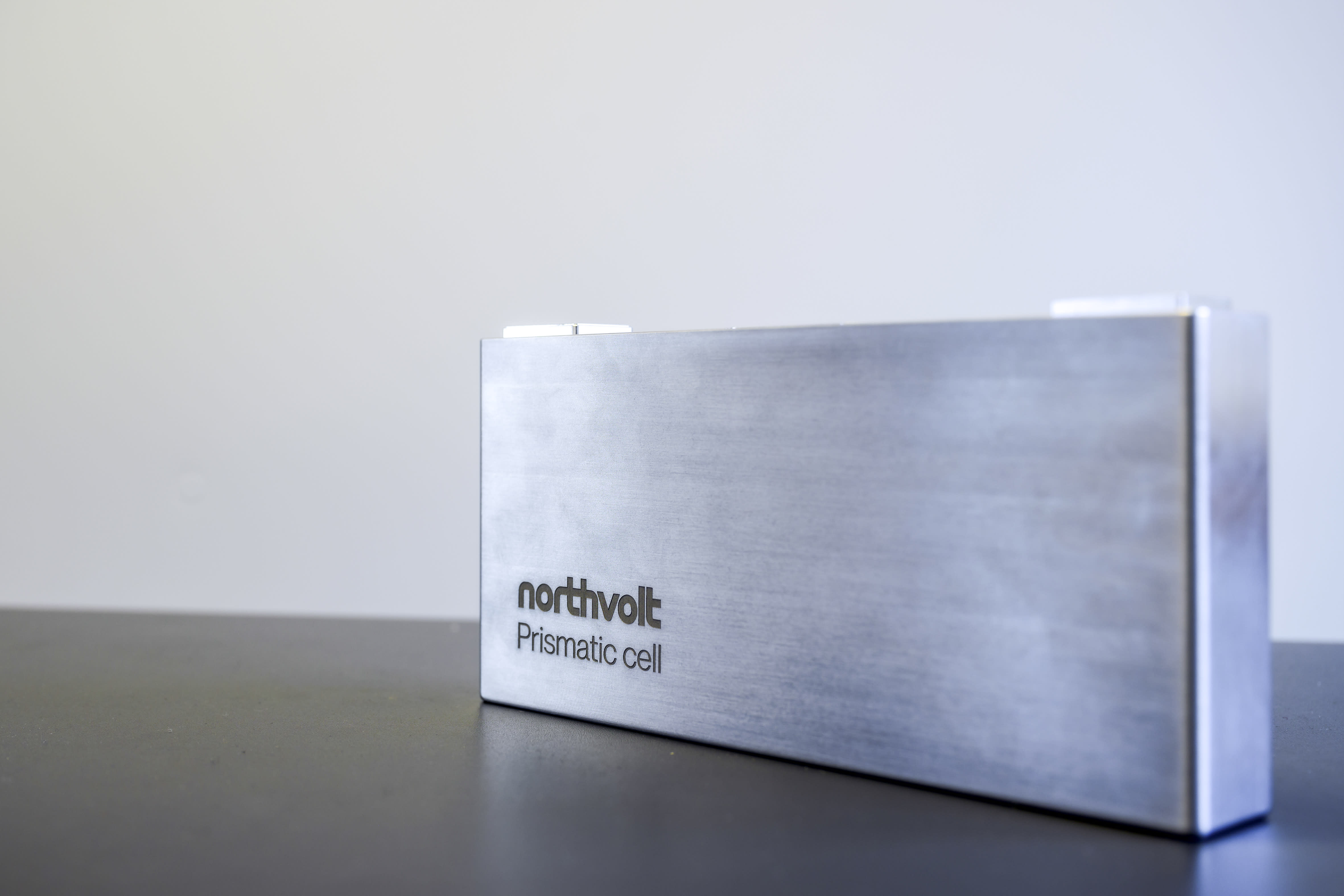Razer DeathAdder V3 Pro review: the perfect palm grip mouse, lighter than ever
The new Razer DeathAdder V3 Pro offers the perfect shape for palm grip users, while significantly cutting weight.
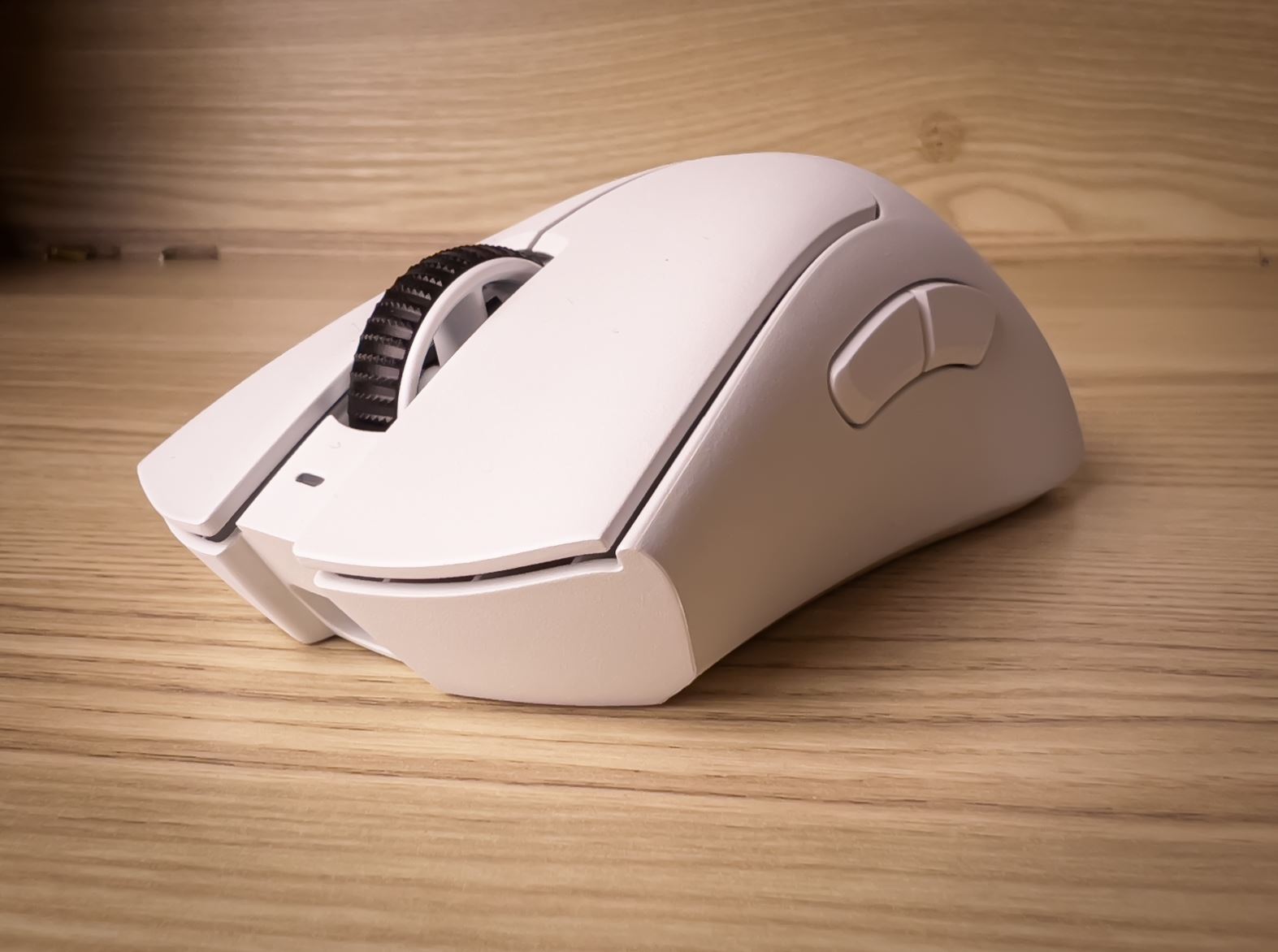
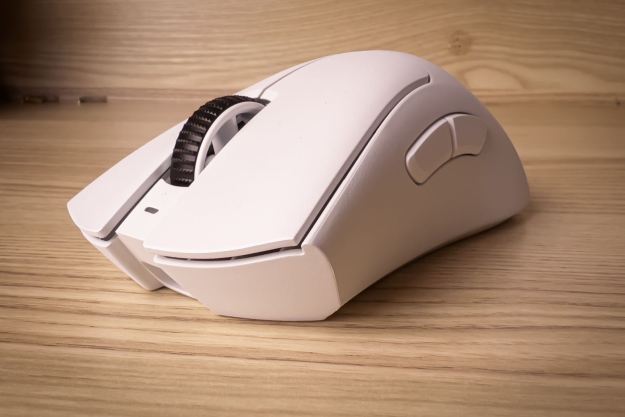
Razer DeathAdder V3 Pro
MSRP $150.00
Pros
Perfect for palm grip Fantastic battery life Lightweight for its size PTFE feet Slight tweaks to design look greatCons
No RGB Price increaseRazer has a gaming mouse for virtually every need you could imagine, but the DeathAdder line was always special. Razer calls it “the most successful gaming mouse of all time,” having sold over 10 million units, and its immense popularity is likely due to just how versatile the design feels. Not to mention — the wired model continues to be one of the cheaper offerings in Razer’s lineup.
The DeathAdder went wireless in its second generation with the V2 Pro, and now with the V3 Pro, the design has undergone some significant tweaks, including cutting a lot of weight and bumping up performance. It also comes with a price increase, from $130 for the V2 Pro, up to $150 for the new model. That affords you a lot of gaming goodness, even if there are cheaper options out there for the budget-conscious.
Design and comfort
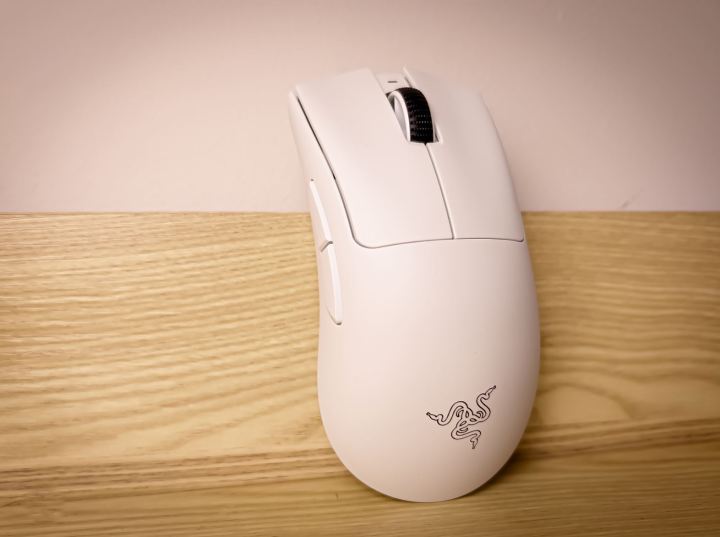
My history with the Razer DeathAdder goes back to 2012 when I first got into PC gaming. The model I used a decade ago didn’t even feature the iconic green LEDs. But I loved my DeathAdder Infrared, and when it started double clicking in 2019, I got a bit upset.
That brings us to the latest mouse release by Razer: the DeathAdder V3 Pro. We were blown away by the recent Razer Viper V2 Pro’s performance, so when I heard those features would be present in the new DeathAdder, I was excited to try it out myself.
One concern I had going into the review was weight. Having grown used to lighter gaming mice since the original DeathAdder was my main jam, I was worried that the extra weight would be a drag on my enjoyment of the mouse. It has tweaks, yes, but it still has the general DeathAdder silhouette, after all.
Razer put the DeathAdder on an extreme diet this time around.
But Razer put the DeathAdder on a rather extreme diet this time around, which cut out 25 grams of weight, and with it, RGB lighting. That’s a 28% drop in weight, putting it at just 63 grams. That’s only 4 grams more than Razer’s own Viper V2 Pro. It’s also significantly lighter than competitors like the Roccat Burst Pro Air and matching the Logitech G Pro X Superlight. In other words, the DeathAdder V3 Pro is now in super-light territory, and that’s fantastic.
The loss of RGB will undoubtedly turn some off, especially if you come to Razer expecting it. But the benefits of keeping the weight down are more than worth the trade-off.
The DeathAdder shape has always been my favorite out of Razer’s mice due to its round design. That ergonomic shape is perfect for palm grip gamers like myself, and it is maintained in the latest model. It even comes in white now, which is a great change-up from the sea of black gaming mice out there.
But the company has made some changes that have never been seen in previous versions. The entire shell is one piece, except for the left and right buttons. The added ring finger ledge compliments this change in design, and the left and right buttons feature a slight amount of concave to cradle your fingers.
Razer raised the roof on the DeathAdder V3, by setting the scroll wheel, side buttons, and top shell higher. The increase in height is just 1.3mm, so isn’t overly noticeable. I did think the taller design felt better in my hand, again, since I use a palm grip. If that’s not you though — or even if you just have smaller hands — this new DeathAdder isn’t the right choice for you.
Connections and battery life
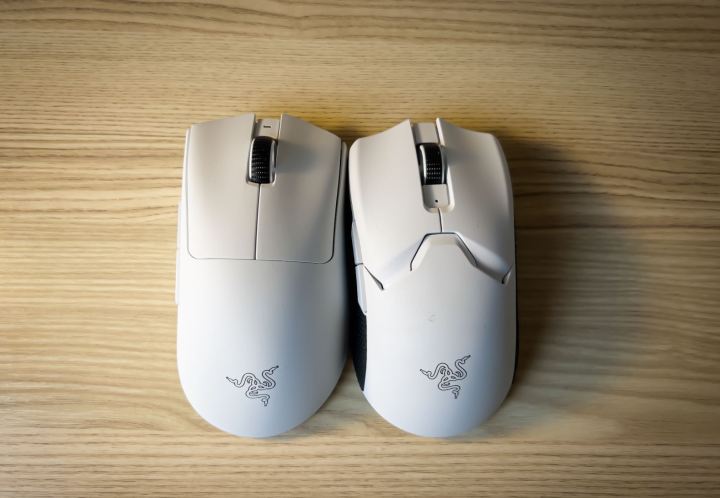 The Razer Viper Pro V2 (on the right) and the DeathAdder V3 Pro (on the left).
The Razer Viper Pro V2 (on the right) and the DeathAdder V3 Pro (on the left).Beyond the new design changes, Razer includes many of the standard features you’d expect in a modern mouse, including the usual pre-cut grip tape, a 2.4GHz HyperSpeed wireless dongle, and a SpeedFlex USB-C cable for charging.
Battery life was one of the big reasons the Viper V2 Pro had become my daily driver since I reviewed it. The DeathAdder is kicking it off of the throne as it sports a 90-hour battery life, which is 10 hours more than the Viper.
The difference in battery life between these two mice also depends on the connection. As one would assume, the battery life of the Viper Pro V2 is cut down dramatically to 24 hours if connected to the Razer HyperPolling wireless dongle, as it bumps the polling rate up to 4,000Hz. I found that trade-off worth the compromise in battery, and Razer offers that same $165 bundle with the DeathAdder V3 Pro, though it wasn’t included in my review unit.
Sensors and switches

The bottom of the DeathAdder V3 Pro is almost identical to the Viper V2 Pro. The DPI and power are one button, and the sensor itself supports up to 30,000 DPI. That’s up from the 20,000 DPI of the previous model and matches the Viper V2 Pro.
The scroll wheel on the DeathAdder V3 Pro is much lighter than the one present on the Viper V2 Pro, which is probably for the best. A complaint of mine with the Viper V2 Pro was that the scroll wheel felt very scratchy and progressively got worse over time, even leading me to eventually lube the scroll wheel. I don’t expect to have that issue with the new DeathAdder because of how light it is.
The switches are the same Gen 3 optical switches that Razer says can be clicked up to 90 million times. They sound and feel excellent.
Sidenote: In almost every mouse I’ve used, the left mouse button always sounds different from the right and I never understood why. While this stands true with the DeathAdder V3 Pro, the difference is far less noticeable and that trend continues on the forward and back side buttons.
Gaming experience
My favorite part about the DeathAdder lineup has always been the palm grip-friendly design. As previously stated, the V3 Pro is by far the most palm grip-friendly mouse I have ever used, which makes for an extremely comfortable experience.
The shape of the mouse fit in my hand like a glove and with the DPI set to 1,600, I felt like I had complete control over my weapon’s recoil in Call of Duty: Black Ops 3. Mowing down zombies is always a blast, but the updated DeathAdder made me feel a bit nostalgic for the days when I played 64-player matches on Call of Duty: Modern Warfare.
The V3 Pro is by far the most palm grip-friendly mouse I have ever used.
Besides this mouse being a palm gripper’s dream, you still get the gold standard for optical switches for instantaneous inputs, PTFE feet for smoother operation, and the option to add grip tape for ultimate control.
Our take
It’s hard to find much to complain about with the Razer DeathAdder V3 Pro. After many years of small changes, the DeathAdder needed an update in the looks category, and that’s exactly what it does in its third generation. The performance is top-notch, and it’s now every bit as light as its rivals. I don’t like to see an increase in price, but Razer’s tweaks in this generation are all improvements to an already-great mouse.
Are there alternatives?
At a price of $150, there are more options available than not. Obviously, if you want something slimmer, then the Razer Viper V2 Pro is a great choice.
Another option is the Roccat Burst Pro Air for $90 and that’s easily one of the best mice I’ve ever used and features a similar shape.
Lastly, the Logitech G Pro X Superlight comes in at $160 for a similar feature set and rounded shape.
How long will it last?
The Razer DeathAdder V3 Pro has a warranty of two years and with the robust plastic construction, I can see it holding up much longer.
Should you buy it?
Yes. The Razer DeathAdder V3 Pro carries the features we know and love about the mouse, but with some adjustments to make it competitive in the gaming mouse market in 2022.

 KickT
KickT 








